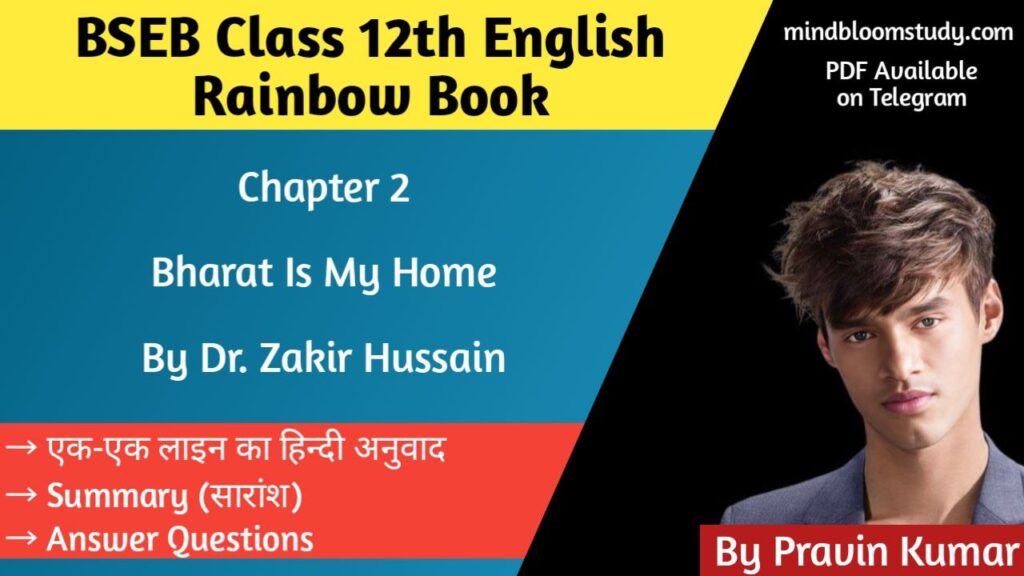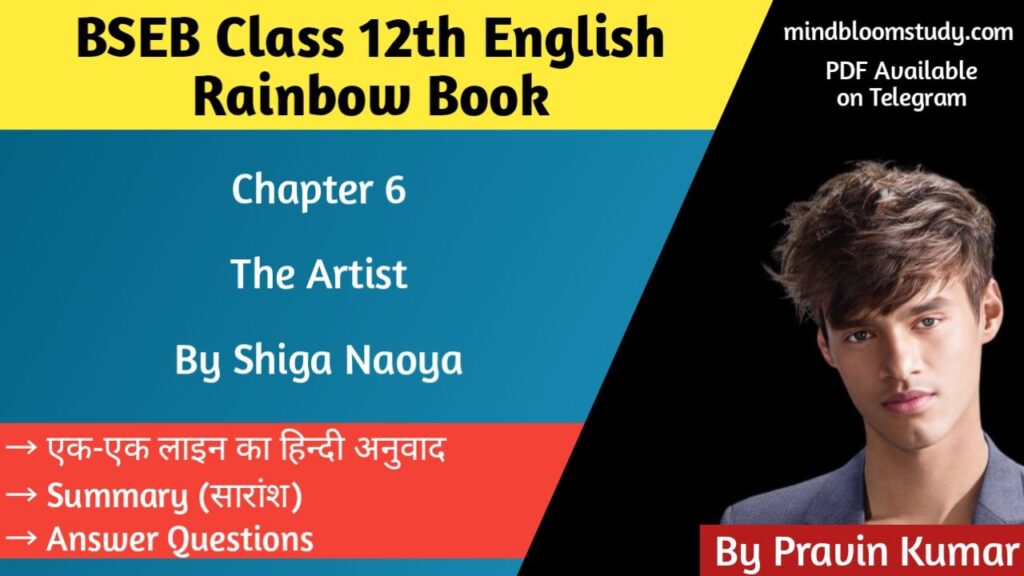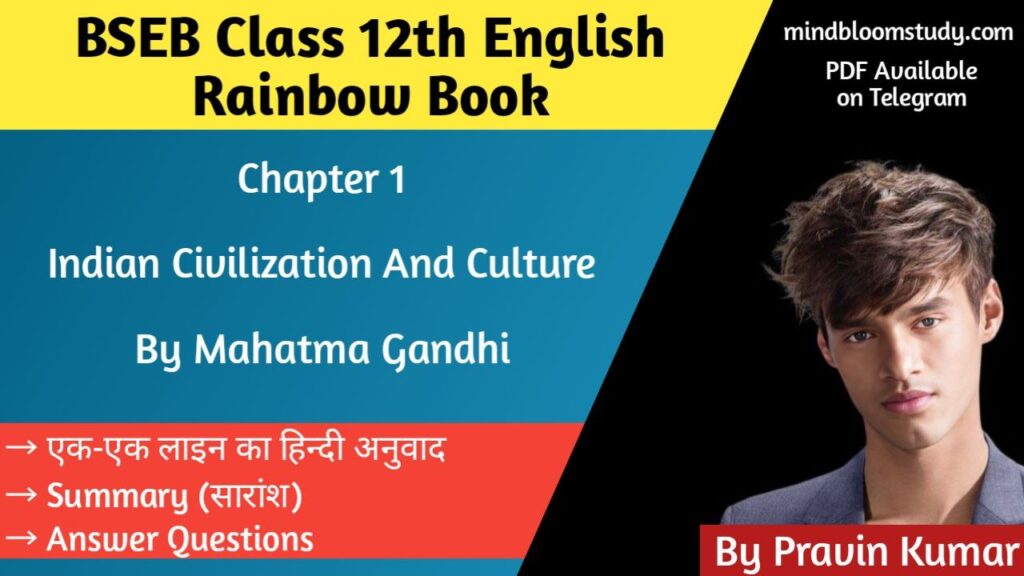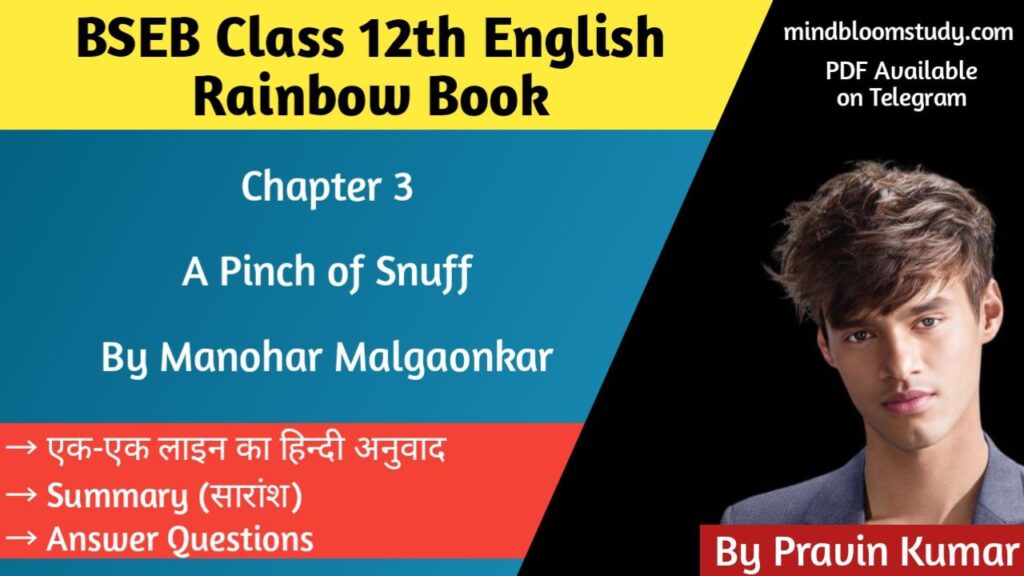Bihar Board Class 12th English : प्रिय विद्याथियों, “Mindbloom Study” (#1 Online Study Portal For Bihar Board Exams) आपके लिए लाया है बिहार बोर्ड कक्षा 12th अंग्रेजी के ODE TO AUTUMN
Introduction (परिचय)
JOHN KEATS (1795-1821), one of the greatest of English Romantic poets, was born at Moonfields, London. He studied at Clark’s School at Enfield. Deeply interested in Cricket and boxing, he grew into a voracious reader especially of Greek mythology. He even started a translation of Virgil’s Aeneid. His ambition to become a poet was fired by his first acquaintance with Spenser’s Faerie Queene. His first poem ‘Lines in Imitation of Spenser’ was published in 1814. His first volume of poetry entitled Poems was published in 1817. His poem ‘Endymion‘ was well appreciated by Wordsworth. It was published in 1818. His odes ‘On Indolence’, ‘On a Grecian Urn’, To Psyche’, ‘To a Nightingale’, ‘On Melancholy’ and ‘Ode to Autumn’ made him a great romantic poet of English literature. So did ‘Lamia’ and ‘Hyperion’. He died of tuberculosis in 1821 at the age of 26, but within this short span of life he was able to achieve greatness. His poems and letters have depth beneath their beauty and reflect his awareness of the pains and sufferings of life. To him, ‘A Thing of beauty is a joy for ever,’ and “Beauty is truth, truth beauty.’ In the poem ‘Ode To Autumn’ Keats describes the beauty and characteristic spirit of autumn in a series of memorable pictures, exhibiting the principle of beauty in nature.
जॉन कीट्स (1795-1821), अंग्रेजी रोमांटिक कवियों में से एक, का जन्म मूनफील्ड्स, लंदन में हुआ था। उन्होंने एनफील्ड के क्लार्क स्कूल में पढ़ाई की। क्रिकेट और मुक्केबाजी में गहरी रुचि रखने वाले, वे विशेष रूप से ग्रीक पौराणिक कथाओं के एक उत्साही पाठक बन गए। उन्होंने वर्जिल के एनीड का अनुवाद भी शुरू किया। स्पेंसर की फेयरी क्वीन से पहली बार परिचित होने पर कवि बनने की उनकी महत्वाकांक्षा को बल मिला। उनकी पहली कविता ‘लाइन्स इन इमिटेशन ऑफ स्पेंसर’ 1814 में प्रकाशित हुई थी। कविताओं का उनका पहला खंड 1817 में प्रकाशित हुआ था। उनकी कविता ‘एंडिमियन’ को वर्ड्सवर्थ ने खूब सराहा था। यह 1818 में प्रकाशित हुई थी। ‘लामिया’ और ‘हाइपरियन’ के साथ भी ऐसा ही हुआ। 1821 में 26 वर्ष की आयु में तपेदिक से उनकी मृत्यु हो गई, लेकिन इस छोटे से जीवन काल में ही वे महानता प्राप्त करने में सफल रहे। उनकी कविताओं और पत्रों में उनकी सुंदरता के नीचे गहराई छिपी है और वे जीवन के दुखों और पीड़ाओं के प्रति उनकी जागरूकता को दर्शाते हैं। उनके लिए, ‘सौंदर्य की वस्तु सदैव आनंददायी होती है’ और “सौंदर्य ही सत्य है, सत्य सौंदर्य।” अपनी कविता ‘ओड टू ऑटम’ में कीट्स ने प्रकृति में सौंदर्य के सिद्धांत को प्रदर्शित करते हुए, यादगार चित्रों की एक श्रृंखला के माध्यम से शरद ऋतु की सुंदरता और विशिष्ट भावना का वर्णन किया है।
ODE TO AUTUMN
Season of mists and mellow fruitfulness,
Close bosom-friend of the maturing sun;
Conspiring with him how to load and bless
With fruit the vines that round the thatch-eaves run;
To bend with apples the moss’d cottage-trees,
And fill all fruit with ripness to the core;
To swell the gourd, and plump the hazel shells
With a sweet kernel; to set budding more,
And still more, later flowers for the bees,
Until they think warm days will never cease,
For Summer has o’er-brimm’d their clammy cells.
Who hath not seen thee oft amid thy store?
Sometimes whoever seeks abroad may find
Thee sitting careless on a granary floor,
Thy hair soft-lifted by the winnowing wind;
Or on a half-reap’d furrow sound asleep,
Drowsed with the fume of poppies, while thy hook Spares the next swath and all its twined flowers:
And sometimes like a gleaner thou dost keep
Steady thy laden head across a brook;
Or by a cider-press, with patient look,
Thou watchest the last oozings hours by hours.
Where are the songs of Spring? Ay, where are they?
Think not of them, thou hast thy music too, –
While barred clouds bloom the soft-dying day,
And touch the stubble-plains with rosy hue;
Then in a wailful choir the small gnats mourn
Among the river sallows, borne aloft
Or sinking as the light wind lives or dies;
And full-grown lambs loud bleat from hilly bourn;
Hedge-crickets sing; and now with treble soft
The red-breast whistles from a garden-croft;
And gathering swallows twitter in the skies.
कविता “ODE TO AUTUMN” का सारांश
यह कविता शरद ऋतु की सुंदरता और प्रचुरता का एक शानदार चित्रण है। कवि शरद ऋतु को परिपक्व होते सूरज का घनिष्ठ मित्र बताता है, दोनों मिलकर प्रकृति को फल और फसल से समृद्ध करने की साजिश रचते हैं।
पहले छंद में, कवि बताता है कि कैसे शरद ऋतु बेलों को फलों से लाद देती है, कुटीर के पेड़ों को सेबों से झुका देती है, और सभी फलों को अंदर तक पकने से भर देती है। यह कद्दू को फुलाती है, हेज़ल के खोलों को मीठे गिरी से भर देती है, और मधुमक्खियों के लिए और भी देर से खिलने वाले फूल पैदा करती है, जिससे उन्हें लगता है कि गर्म दिन कभी खत्म नहीं होंगे।
दूसरे छंद में, कवि शरद ऋतु के मानवीकृत रूपों का वर्णन करता है जिसे लोग अक्सर देखते हैं। इसे कभी खलिहान के फर्श पर लापरवाही से बैठे हुए, हवा में बाल लहराते हुए देखा जा सकता है। या फिर इसे आधी कटी हुई खेत की मेंड़ पर अफीम के धुएं से मदहोश होकर सोते हुए देखा जा सकता है। कभी-कभी यह एक बीनने वाले की तरह, बोझ से लदा सिर लिए एक नाले को पार करती हुई दिखती है, या फिर साइडर प्रेस के पास घंटों तक धैर्यपूर्वक अंतिम बूंदों को टपकते हुए देखती है।
अंतिम छंद में, कवि वसंत के गीतों के बारे में सोचने से मना करता है, और जोर देता है कि शरद ऋतु का भी अपना संगीत है। जैसे-जैसे दिन ढलता है, बादल गुलाबी रंगत बिखेरते हैं, और तब छोटे मच्छर नदियों के किनारे विलाप करते हुए उड़ते हैं। पूर्ण विकसित मेमने पहाड़ियों से जोर से मिमियाते हैं, हेज-क्रिकेट गाते हैं, और रॉबिन अपनी मधुर सीटी बजाते हैं। इकट्ठा होती हुई अबाबीलें आसमान में चहचहाती हैं, जो शरद ऋतु के अपने शांत और समृद्ध सौंदर्य को दर्शाती हैं।
यह कविता शरद ऋतु को केवल मौसम के रूप में नहीं, बल्कि एक उर्वर और शांत शक्ति के रूप में प्रस्तुत करती है जो जीवन और प्रचुरता से भरी हुई है।
Summary
Ode To Autumn is a very nice poem which is composed by John Keats. He was born in 1795 in London and died in 1821. The poet was a great lover of nature (प्राकृतिक). In this poem, the poet describes (वर्णन करना) the beauty and music of autumn (शरद ऋतु या पतझड़) in a series (श्रृंखला) of memorable (यादगार) pictures. He says that autumn is the season of mists (कुहरा, कुहासा) and ripening (पकना) of fruits. Autumn is a friend of the sun. There is neither heat of summer nor cold of winter. The rays of the sun make the fruits fleshy (गुददार), fat and tasty (स्वादिष्ट). Nature looks beautiful everywhere. Wind blows friendly (मिलनसार) and birds sing sweet songs. People are happy in this season. They can do their work easily in this season. In the last lines of the poem the poet presents autumn as a store-house of music. He says that autumn is not without its music. Nature remains calm and cool (शीतल) in this pleasant (मनोहर) season everywhere.
Answer Questions
B.1. 1. Complete the following sentences on the basis of the poem :
a) ……… is the season of mists and mellow fruitfulness.
b) ………. fill all fruits with ripeness.
c) ………. sits carelessly on a granary floor.
d) The ‘winnowing wind’ softly lifts the hair of ……..
e) ………. twitter in the sky.
B.1. 2. Answer the following questions briefly :
1) Who are depicted as friends in the first two lines?
2) What happens in autumn?
3) In what sense does the Sun conspire with autumn?
4) How do the sun and summer help in ripeness of fruits in autumn?
5) How are autumn and summer related to spring?
C. 1. LONG ANSWER QUESTIONS
1. What is the central idea of the poem?
2. What does Keats mean by the following:
‘T was here we loved in
Summer day and greener.’
3. Does the poet convey his love to Nature through such lines as given above? If yes, give examples.
4. Pick out the images related to different aspects of Nature. Write a note on the use of images in the poem.
5. What do autumn and spring symbolise in the poem? Explain.
6. Do you like this poem? Give two reasons.
7. What does the poet say about the music of autumn? Do you like this music?
– : The End : –





